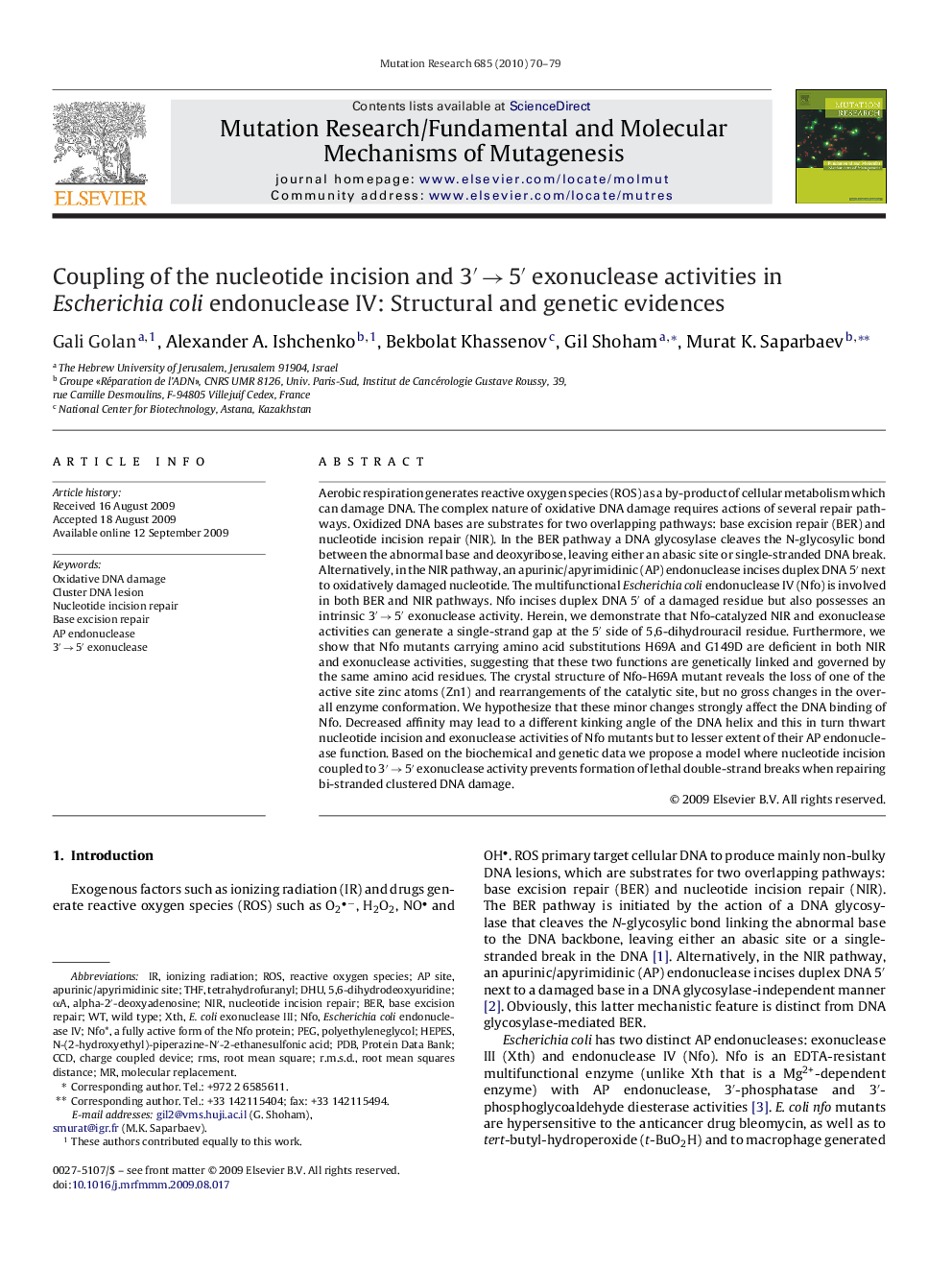| کد مقاله | کد نشریه | سال انتشار | مقاله انگلیسی | نسخه تمام متن |
|---|---|---|---|---|
| 2146760 | 1548377 | 2010 | 10 صفحه PDF | دانلود رایگان |

Aerobic respiration generates reactive oxygen species (ROS) as a by-product of cellular metabolism which can damage DNA. The complex nature of oxidative DNA damage requires actions of several repair pathways. Oxidized DNA bases are substrates for two overlapping pathways: base excision repair (BER) and nucleotide incision repair (NIR). In the BER pathway a DNA glycosylase cleaves the N-glycosylic bond between the abnormal base and deoxyribose, leaving either an abasic site or single-stranded DNA break. Alternatively, in the NIR pathway, an apurinic/apyrimidinic (AP) endonuclease incises duplex DNA 5′ next to oxidatively damaged nucleotide. The multifunctional Escherichia coli endonuclease IV (Nfo) is involved in both BER and NIR pathways. Nfo incises duplex DNA 5′ of a damaged residue but also possesses an intrinsic 3′ → 5′ exonuclease activity. Herein, we demonstrate that Nfo-catalyzed NIR and exonuclease activities can generate a single-strand gap at the 5′ side of 5,6-dihydrouracil residue. Furthermore, we show that Nfo mutants carrying amino acid substitutions H69A and G149D are deficient in both NIR and exonuclease activities, suggesting that these two functions are genetically linked and governed by the same amino acid residues. The crystal structure of Nfo-H69A mutant reveals the loss of one of the active site zinc atoms (Zn1) and rearrangements of the catalytic site, but no gross changes in the overall enzyme conformation. We hypothesize that these minor changes strongly affect the DNA binding of Nfo. Decreased affinity may lead to a different kinking angle of the DNA helix and this in turn thwart nucleotide incision and exonuclease activities of Nfo mutants but to lesser extent of their AP endonuclease function. Based on the biochemical and genetic data we propose a model where nucleotide incision coupled to 3′ → 5′ exonuclease activity prevents formation of lethal double-strand breaks when repairing bi-stranded clustered DNA damage.
Journal: Mutation Research/Fundamental and Molecular Mechanisms of Mutagenesis - Volume 685, Issues 1–2, 1 March 2010, Pages 70–79